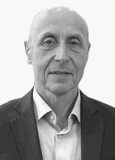Using time intervals in sports training
Keywords:
time interval 12.36 s, golden ratio, feasibility and effectiveness of use in sports training.Abstract
Objective of the study was to justify the feasibility of using a time interval of 12.36 seconds and its multiples in sports training.
Methods and structure of the study. The experiment was carried out in several stages. In the period from 2016 to 2018, the first stage, the dynamics of the level of development of special endurance of runners was studied using a time interval of 12.5 seconds and its multiples in the training process of marathon athletes. At the second stage in 2021, the dynamics of the accuracy of perception of the duration of a time interval of 12.5 seconds in amateur athletes was revealed, depending on age. At the third stage in 2023, the stability and variability of the perception of two time intervals was studied: an individual minute - 60 s and a time interval lasting 12.36 seconds and its multiples: 24.7; 37.1; 49.4 seconds. In addition, the objectives of the study included assessing the feasibility of using the time interval under consideration in training children aged 7-11 years old doing taekwondo.
Results and conclusions. The rhythmic ordering of loads set in time ensures the passage of the most important processes in the body of athletes with the least energy costs, and therefore increases the effectiveness of the training process. This conclusion is confirmed by the relationship of the time interval of 12.36 with the golden ratio.
References
Astakhov A.V., Shishov K.V. Otsenka «vnutrenney mery nastoyashchego» kak faktora effektivnosti fizkulturno-sportivnoy deyatelnosti. Fizicheskaya kultura: vospitaniye, obrazovaniye, trenirovka. 2018. No. 2. pp. 34-35.
Astakhov A.V. Issledovaniye vozrastnoy dinamiki tochnosti vospriyatiya dlitelnosti «vnutrenney mery nastoyashchego» u sportsmenov. Vestnik Kaluzhskogo universiteta. 2021. No. 4 (53). pp. 55-57.
Astakhov A.V., Motorin E.O. Issledovaniye stabilnosti i izmenchivosti vospriyatiya vremeni u sportsmenov. U istokov rossiyskoy gosudarstvennosti. Rezultaty issledovaniy, materialy. Kaluga: IP Streltsov I.A. («Eydos») publ., 2023. pp. 55-57.
Balakshin O.B. Kody da Vinchi - novaya rol v yestestvoznanii? Dualizm alternativ garmonii, poznaniya i samorazvitiya sistem. 4th ed., corr., sup. Moscow: LKI publ., 2011. 248 p.
Gabrys T. Anaerobnaya rabotosposobnost sportsmenov (Limitiruyushchiye faktory, testy i kriterii, sredstva i metody trenirovki). Doct. diss. (Hab.). Moscow, 2000. 403 p.
James W. Psikhologiya. Petrovskaya L.A. [ed.]. Moscow: Pedagogika publ., 1991. 368 p.
Moiseeva N.I. Vremya v nas i vremya vne nas. Leningrad: Lenizdat publ., 1991. 156 p.
Motorin E.O., Motorin I.O., Astakhov A.V. Metodika ispolzovaniya ritmichno povtoryayushchikhsya vremennykh intervalov v ozdorovitelnoy trenirovke detey 9-11 let (na primere tkhekvondo). U istokov rossiyskoy gosudarstvennosti. Issledovaniya, materialy. Kaluga: KGU im. K.E. Tsiolkovskogo publ., 2022. pp. 74-77.
Motorin E.O., Astakhov A.V. Khronopsikhologiya v sporte (effektivnaya sistema parametrov periodizatsii deystviy tkhekvondistov 7-11 let, opredelyayushchaya aktualizatsiyu i optimizatsiyu trenirovochnogo protsessa. Collection of abstracts of works of participants of the XX All-Russian youth festival “I will be appreciated in the XXI century”. Rumyantsev A.A., Rumyantseva E.A. [ed.]. Moscow, 2023. 336 p.
Savelev I.A. Kinetika protsessov aerobnogo i anaerobnogo energeticheskogo obmena u cheloveka pri napryazhennoy myshechnoy deyatelnosti. PhD diss. abstract. Moscow, 2001.


